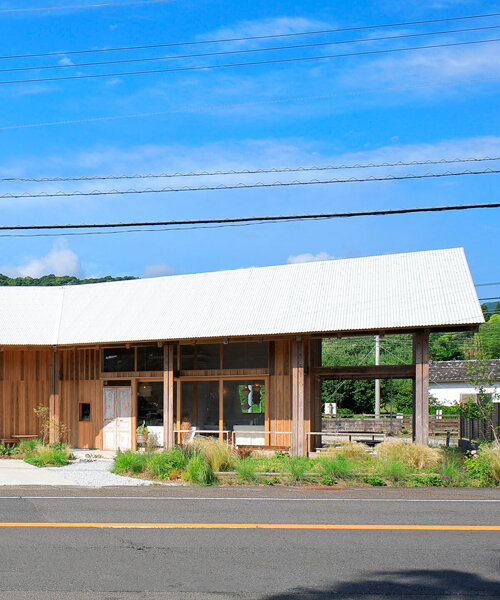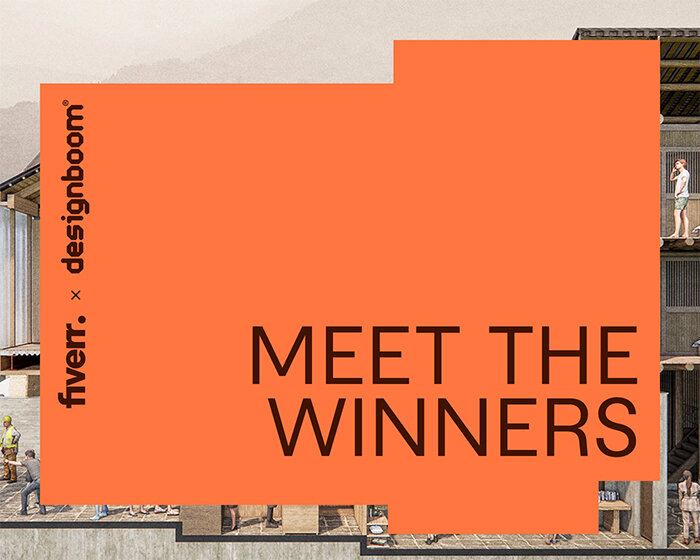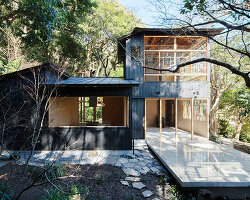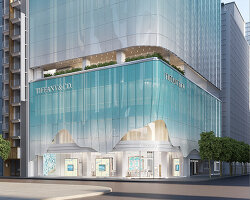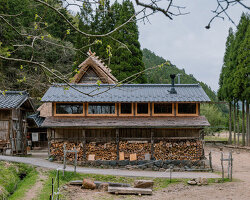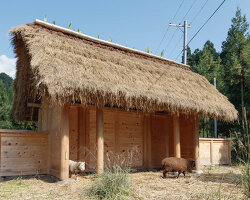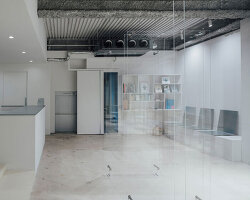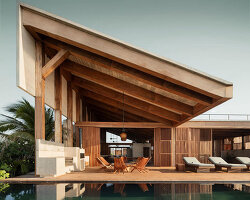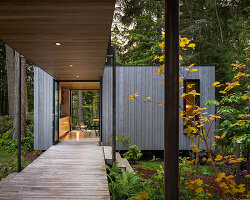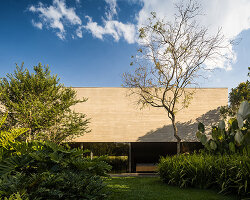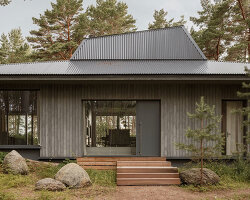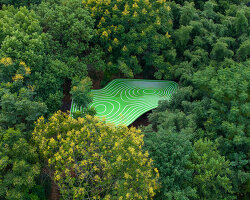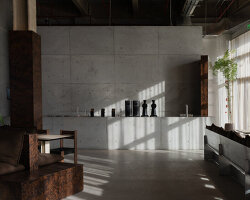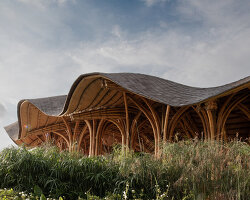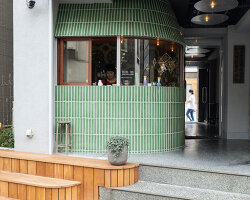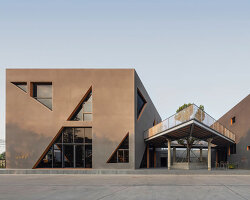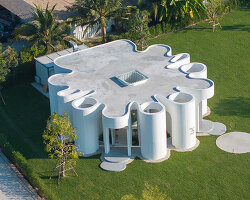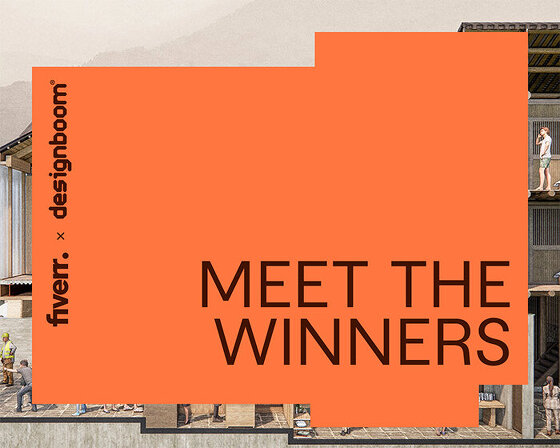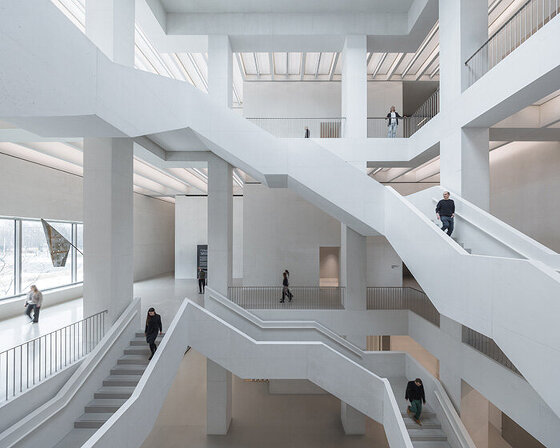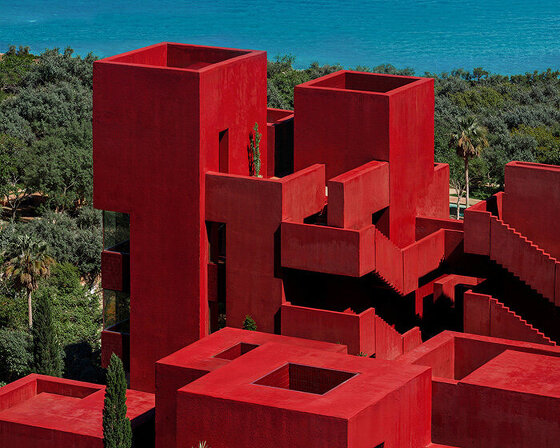anandah café and residence follows an open-concept design
Anandah, designed by Ishiodori Takeshi Architects, stands on the small island of Aoshima in Miyazaki City, Japan, combining a café and the client’s residence. The architectural project aims to create an environment that attends to the subtropical climate and takes advantage of its unique coastal location.
In the center of the island, a shrine enveloped by lush subtropical vegetation boasts a circumference of 1.5 km. Facing a main road juxtaposed against the vastness of the Pacific Ocean to the east and complemented by the ‘Kodomo no Kuni’ park across the way, and with a view of a mountain range to the west separated by railroad tracks, the site finds itself at the intersection of mountains and sea.
The design imitates a space in which ‘forest trees serve as pillars, with just a roof between them’. This notion leads to the conception of a generous, simple open layout where wind flows freely, shielding occupants from harsh sunlight and rainfall. The design thus revolves around a large, gently arched roof that seems to cradle the entire site, with almost half of the structure’s area dedicated to terraces. The open-concept design and boundless indoor-outdoor spaces provide a sense of freedom from any spatial restrictions.
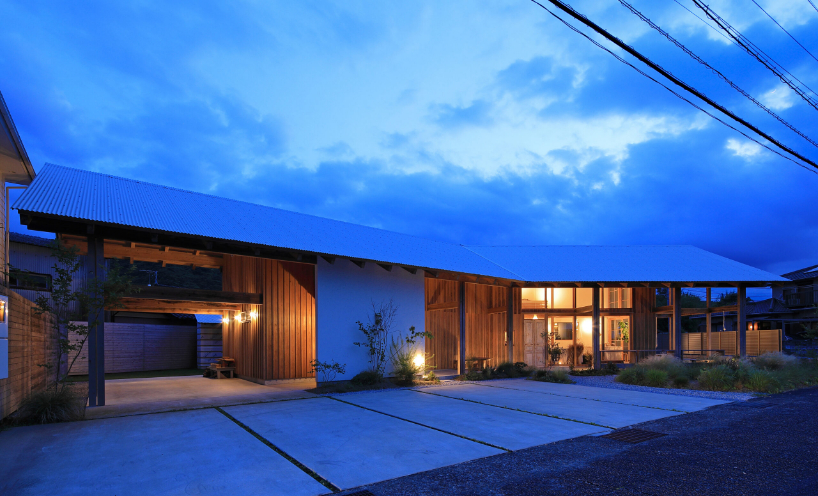
all images by studio marsh
steel and wooden components create a subtle ‘primal’ aesthetic
The building, extending across the full north-south width of the site, features open semi-outdoor terraces at its northern and southern extremities on three sides. The gable roof, slightly sloped at 5 degrees, is adorned with white galvalume steel corrugated plates. The steel elements combined with the cedar shingles on the exterior walls convey a primal aesthetic. Beyond aesthetics, the design team opts for these materials to mitigate the impact of strong typhoon winds.
The interior and terraces benefit from a spacious atrium beneath the expansive roof. Wooden windows allow the Pacific Ocean’s breezes to permeate the space. The natural light of the western sun spreads throughout the interior dissolving the boundaries between inside and outside.
The name ‘anandah,’ derived from Sanskrit, signifies ‘happiness’ and ‘freedom from all limitations’. It is chosen for the café, with the aspiration that visitors would find solace in a space where interior and exterior blends, and where the spatial experience triggers a sense of joy and liberation.
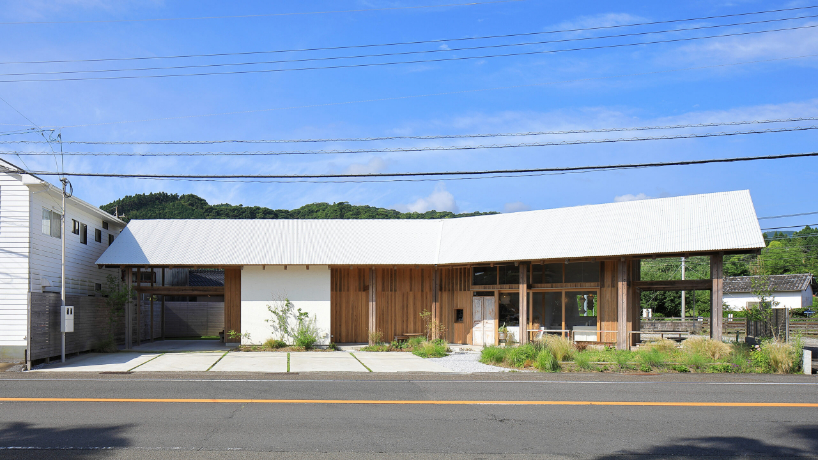
the gable roof, slightly sloped at 5 degrees, is adorned with white galvalume steel corrugated plates
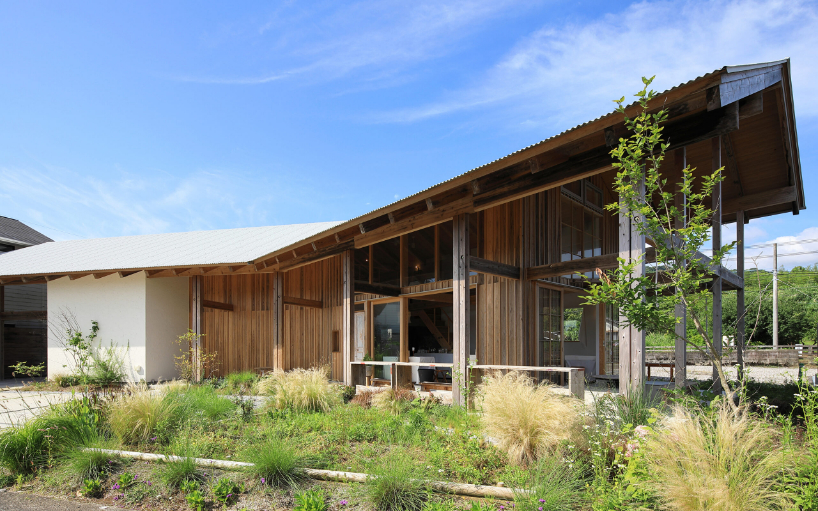
the design thus revolves around a large, gently arched roof that seems to cradle the entire site
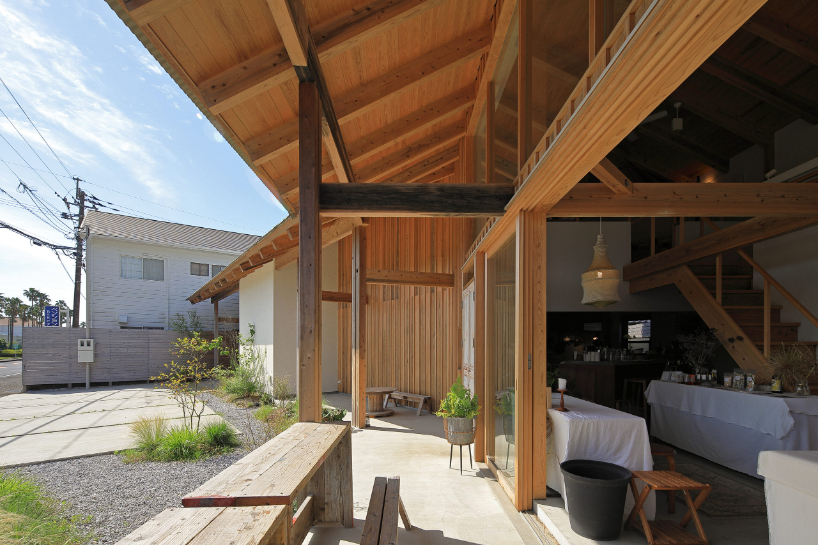
the design imitates a space in which ‘forest trees serve as pillars, with just a roof between them’
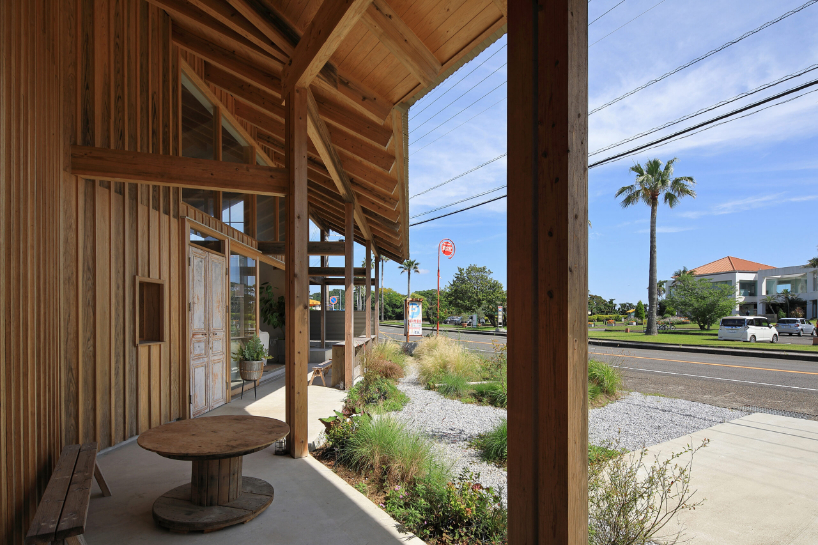
the simple open layout allows for wind to flow freely while shielding occupants from harsh sunlight
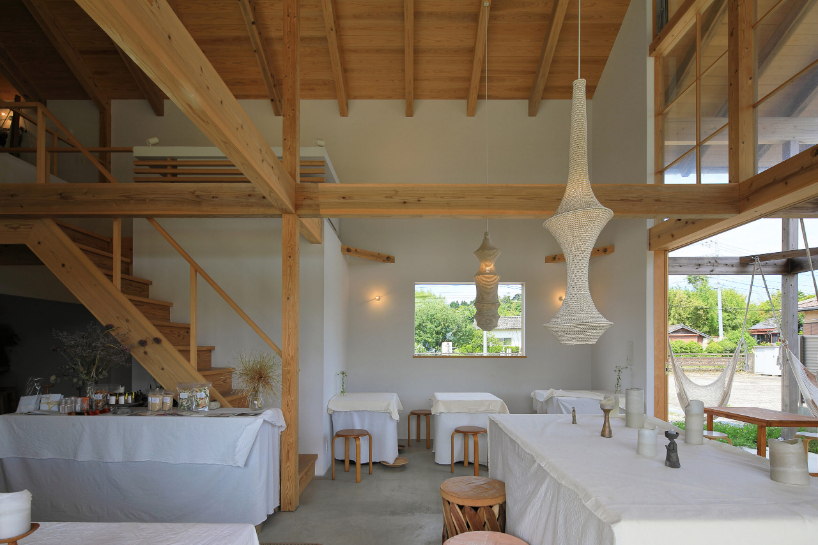
the natural light of the western sun spreads throughout the interior
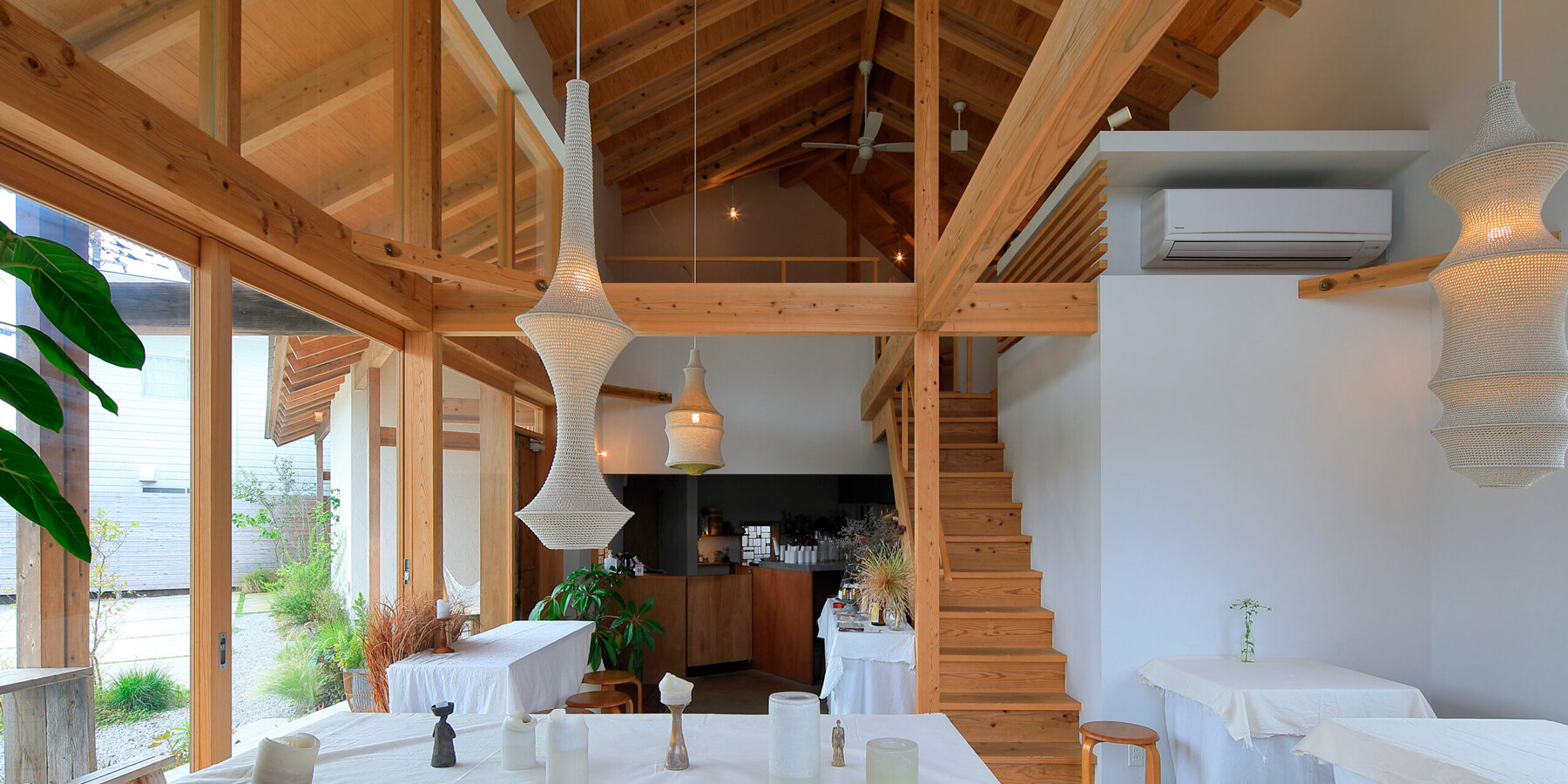
the interior benefits from a spacious atrium beneath the expansive roof
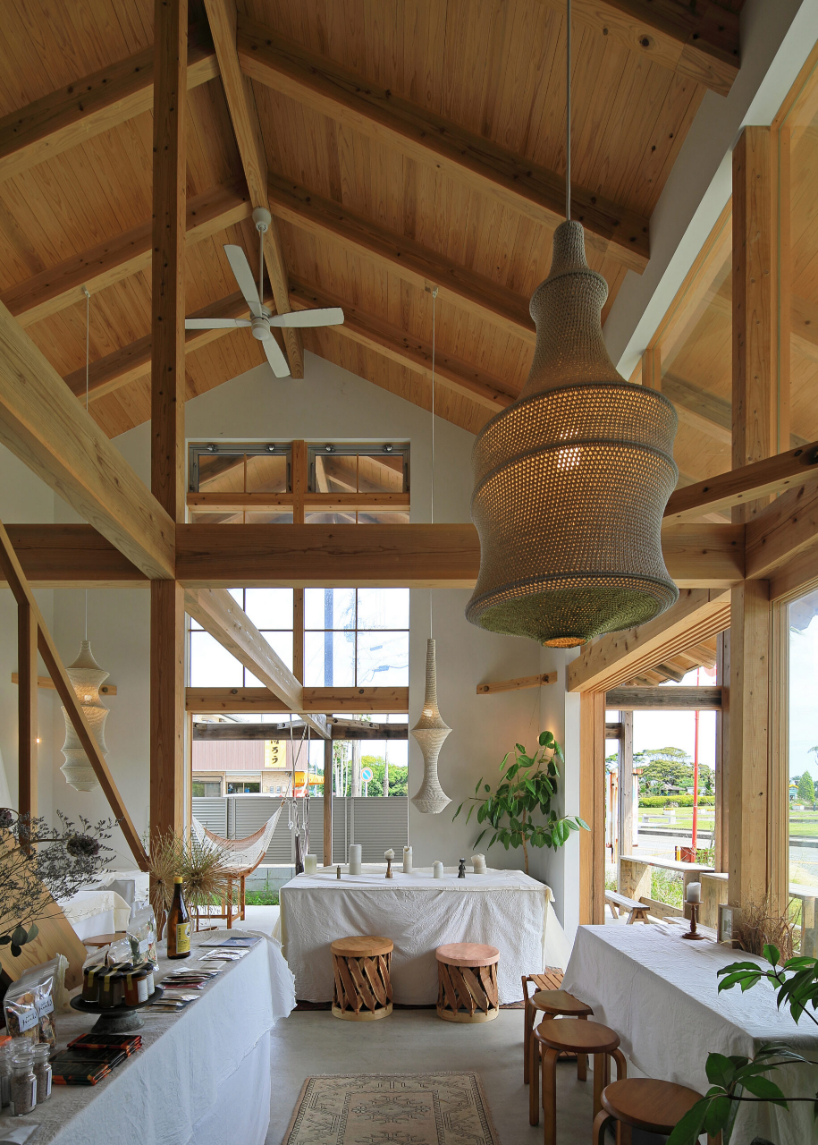
the design aims to create a spatial experience that triggers a sense of joy and liberation
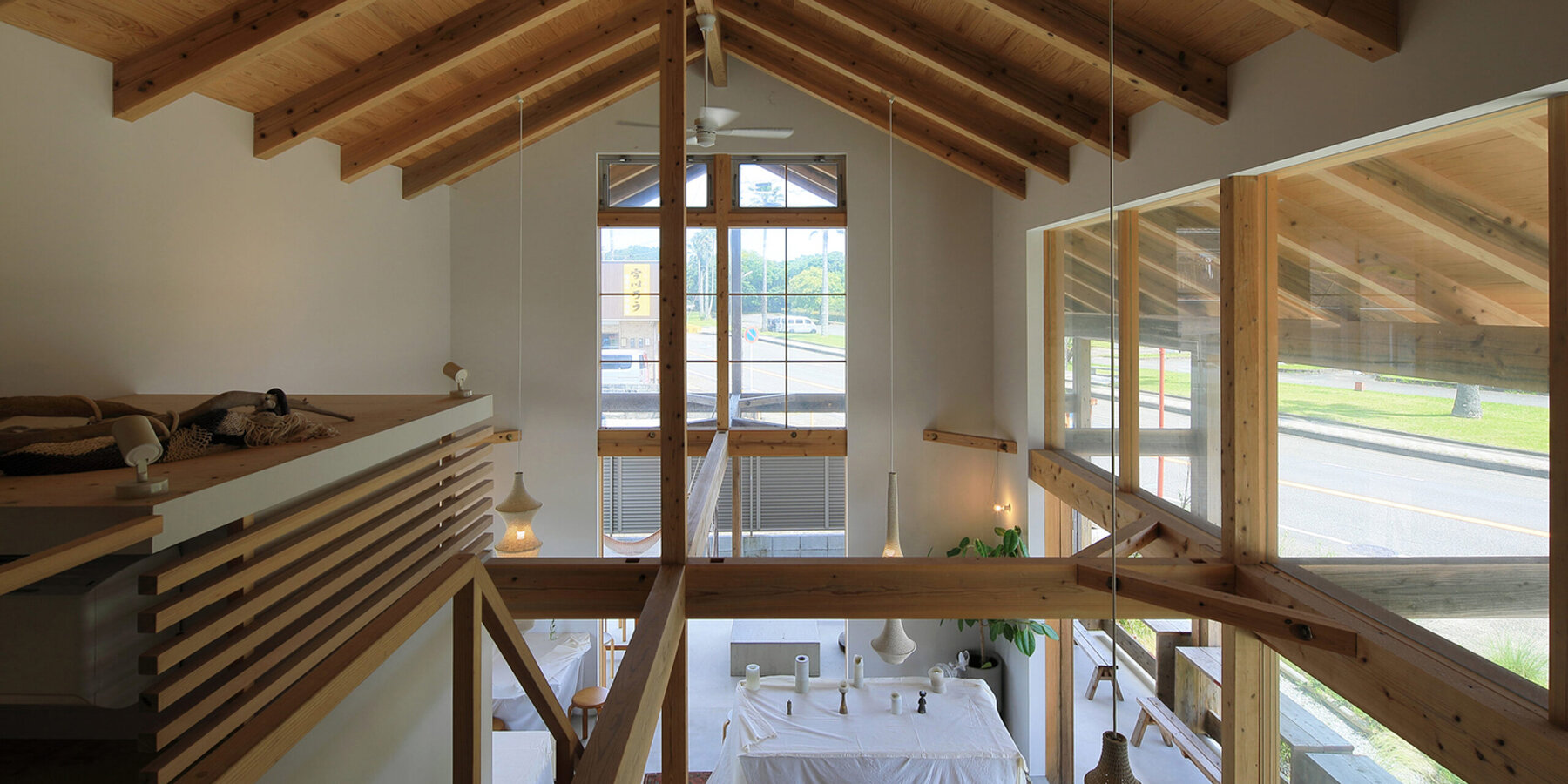
several wooden pillars support the main structure and the gable roof




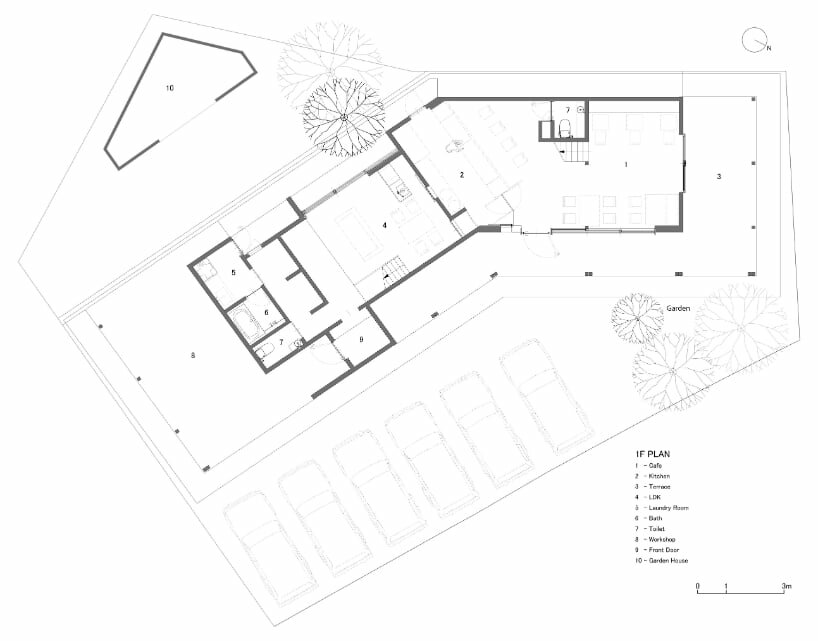
project info:
name: anandah | @anandah.inc
architect: Ishiodori Takeshi Architects | @ishiodori_takeshi_architects
location: Aoshima, Miyazaki, Japan
photography: studio marsh
designboom has received this project from our DIY submissions feature, where we welcome our readers to submit their own work for publication. see more project submissions from our readers here.
edited by: christina vergopoulou | designboom
